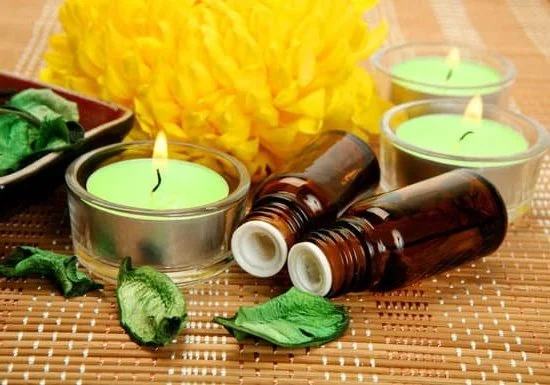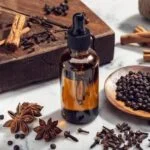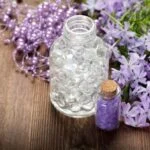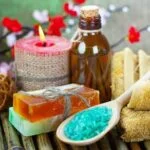Aromatherapy massage is a therapeutic practice that combines the benefits of soothing touch with the use of essential oils. This type of massage has been utilized for centuries to promote physical and emotional well-being. In this introductory section, we will explore the essence of aromatherapy massage and uncover its various uses and benefits.
Aromatherapy massage finds its roots in ancient civilizations, where aromatic plants were used for their healing properties. From Egypt to China, different cultures have recognized the power of essential oils in promoting relaxation, alleviating pain, and enhancing overall health. Today, aromatherapy massage continues to be embraced as a holistic approach to wellness.
At the heart of aromatherapy massage are essential oils – highly concentrated plant extracts known for their unique fragrance and therapeutic effects. These oils are carefully selected based on their specific properties and combined with carrier oils for safe application on the skin. When applied during a massage, they are not only inhaled but also absorbed by the body, working synergistically to provide various benefits such as reducing stress, relieving pain, improving circulation, and boosting mood.
With a growing body of scientific research supporting its effectiveness, aromatherapy massage is gaining recognition as a complementary therapy in promoting overall well-being. It integrates the healing power of touch with the aromatic qualities of essential oils to create an immersive experience that rejuvenates both body and mind.
As we delve deeper into this article, we will uncover the rich history behind aromatherapy massage, explore its scientifically proven therapeutic benefits, and learn about the various techniques employed in this ancient practice.
The Origins of Aromatherapy Massage
The Ancient Origins of Aromatherapy Massage
Aromatherapy massage has a rich history that dates back thousands of years. Its origins can be traced to ancient civilizations such as Egypt, China, and India, where the use of aromatic plants and their oils for healing purposes was prevalent. In ancient Egypt, for example, essential oils were used not only for physical ailments but also for spiritual rituals and embalming practices.
One notable figure in the history of aromatherapy massage is Avicenna, a Persian physician and philosopher who lived during the 10th century. Avicenna is often referred to as the father of aromatherapy due to his extensive writings on medicinal plants and their therapeutic properties. His work, “The Canon of Medicine,” became a foundational text in both Western and Islamic medicine.
Expansion and Revival in Modern Times
Despite its ancient roots, aromatherapy massage did not gain widespread recognition until the 20th century. During this time, French chemist René-Maurice Gattefossé coined the term “aromatherapy” after experiencing the healing effects of lavender oil on his burned hand. This led to further research and experimentation with essential oils for therapeutic purposes.
In the modern era, aromatherapy massage has experienced a revival as more people seek natural alternatives for relaxation and wellness. It has become a popular complementary therapy alongside conventional medicine, with numerous spas, wellness centers, and holistic practitioners incorporating its techniques into their treatments.
A Global Practice with Cultural Influences
Throughout history, different cultures have developed their own unique approaches to aromatherapy massage. In India, it is known as Ayurvedic massage, which combines specific essential oils with specialized massage techniques based on an individual’s dosha (body type). In Japan, aromatherapy has been integrated into traditional shiatsu massages, enhancing the overall healing experience.
As aromatherapy massage continues to evolve and adapt, it incorporates various cultural practices and influences from around the world. This blending of techniques and traditions creates a diverse field that caters to the needs and preferences of individuals from different backgrounds.
The rich history of aromatherapy massage provides a solid foundation for understanding its benefits and practices. From ancient civilizations to modern times, this therapeutic approach has stood the test of time and continues to offer healing and relaxation for people seeking natural and holistic wellness solutions.
Unveiling the Power of Essential Oils
Essential oils are a key component in aromatherapy massage, as they play a significant role in enhancing the healing and therapeutic benefits of the treatment. These concentrated plant extracts are known for their powerful properties, including their ability to promote relaxation, relieve pain, and uplift mood.
One way that essential oils enhance aromatherapy massage is through their scent. The olfactory system is closely connected to the brain’s limbic system, which controls emotions and memories.
When essential oils are inhaled during a massage, the scent molecules travel to the olfactory receptors and stimulate the limbic system, leading to various psychological and emotional responses. For example, lavender essential oil has a calming aroma that helps reduce stress and anxiety, while citrus oils like lemon and orange can uplift mood and promote positivity.
In addition to their aromatic properties, essential oils also possess therapeutic qualities that can benefit the physical body. Each essential oil contains unique chemical compositions that contribute to its specific healing properties. For example, peppermint essential oil contains menthol, which has analgesic and cooling effects on sore muscles or joints when applied topically during a massage. Eucalyptus essential oil has antiseptic properties that can help with respiratory issues when used in aromatherapy massage.
The power of essential oils lies not only in their pleasant scents but also in their ability to interact with the body’s physiological systems. When combined with various massage techniques such as Swedish or deep tissue massage, these oils can penetrate deep into the skin and be absorbed by the bloodstream, allowing their therapeutic properties to take effect.
It is important to note that different essential oils have varying strengths and potential side effects, so it is crucial to consult a qualified aromatherapist who can recommend appropriate oils for individual needs.
To summarize, essential oils are integral to aromatherapy massage as they enhance both the psychological and physiological effects of the treatment. Their aromatic scents trigger emotional responses while their therapeutic properties provide physical relief and healing. It is important to use high-quality essential oils and seek professional guidance to ensure safe and effective use in aromatherapy massage.
| Essential Oil | Aromatherapy Properties |
|---|---|
| Lavender | Calming, reduces stress and anxiety |
| Lemon | Uplifting, promotes positivity |
| Peppermint | Analgesic, cooling effect on sore muscles or joints |
| Eucalyptus | Antiseptic, helps with respiratory issues |
The Science Behind Aromatherapy Massage
Aromatherapy massage has gained popularity in recent years due to its potential therapeutic benefits. This section will delve into the science behind aromatherapy massage and explore its various therapeutic benefits.
One of the key aspects of aromatherapy massage is the use of essential oils, which are highly concentrated plant extracts. These essential oils are selected based on their specific properties and are believed to have various therapeutic effects on both the body and mind. When these oils are applied during a massage, they are absorbed through the skin and inhaled, allowing their beneficial compounds to enter the bloodstream and interact with the body’s systems.
Research suggests that different essential oils have distinct therapeutic benefits. For example, lavender oil has been found to promote relaxation and reduce anxiety, while peppermint oil may help alleviate headaches and improve digestion. The specific benefits of each essential oil used in aromatherapy massage can vary, but overall, they are believed to have a positive impact on physical and mental well-being.
In addition to the effects of essential oils, the physical manipulation used in aromatherapy massage also contributes to its therapeutic benefits. The application of gentle pressure, stroking, and kneading during a massage helps stimulate blood circulation, relax muscles, and release tension. This combination of physical touch and aromatic scents creates a holistic experience that can promote relaxation, reduce pain and stiffness, enhance mood, and improve overall health.
| Essential Oil | Therapeutic Properties |
|---|---|
| Lavender | Relaxing, calming, analgesic (pain-relieving), sedative |
| Peppermint | Invigorating, uplifting, analgesic, digestive |
| Chamomile | Soothing, anti-inflammatory, sedative, antispasmodic |
| Eucalyptus | Decongestant, expectorant, antimicrobial |
| Geranium | Balancing, calming, mood-enhancing |
It is important to note that while aromatherapy massage offers potential therapeutic benefits, it may not be suitable for everyone. Some individuals may be allergic or sensitive to certain essential oils, and others may have medical conditions or take medications that could interact with the oils. It is always recommended to consult with a qualified aromatherapist or healthcare professional before undergoing aromatherapy massage.
Overall, the science behind aromatherapy massage highlights the potential of this holistic practice to promote physical and mental well-being. By harnessing the power of essential oils and combining them with skilled touch techniques, aromatherapy massage offers a unique approach to relaxation and healing.
Aromatherapy Massage Techniques
Aromatherapy massage, as the name suggests, combines the therapeutic benefits of massage therapy with the use of aromatherapy essential oils. The techniques employed in aromatherapy massage differ from traditional massage methods, as they focus on harnessing the power of scent to promote relaxation and healing. In this section, we will delve deeper into the unique methods used in aromatherapy massage and how they contribute to overall well-being.
One common technique used in aromatherapy massage is called effleurage. This involves long, sweeping strokes that glide along the body, providing a gentle yet stimulating sensation. The purpose of effleurage is to spread the essential oils evenly across the skin, enhancing their absorption and distribution throughout the body. This technique not only helps relax tense muscles but also promotes proper blood circulation and lymphatic drainage.
Another technique employed in aromatherapy massage is petrissage, which involves kneading and squeezing motions using both hands. Petrissage helps to release tension from specific areas of the body while also improving muscle flexibility and reducing inflammation. Combined with the aromatic oils used in aromatherapy, petrissage can provide a deeply relaxing experience while targeting specific problem areas.
When it comes to aromatherapy massage techniques, it’s important to mention that therapists often customize their approach based on an individual’s unique needs and preferences. This may include incorporating additional techniques such as friction or tapotement for more invigorating massages or focusing on certain acupressure points for targeted relief. The versatility of these techniques allows therapists to tailor each session to address specific issues or goals.
To summarize, aromatherapy massage techniques are distinct from traditional massage methods due to their emphasis on utilizing essential oils to enhance relaxation and healing benefits. Effleurage and petrissage are two commonly used techniques that promote oil absorption, improve circulation, and release muscle tension. Additionally, therapists may employ various other techniques to create a personalized and impactful experience for each individual. The next section will explore how aromatherapy massage addresses physical ailments and its healing properties in greater detail.
| Aromatherapy Massage Techniques | Description |
|---|---|
| Effleurage | Long, sweeping strokes that spread essential oils evenly |
| Petrissage | Kneading and squeezing motions to release tension and improve flexibility |
| Friction/Tapotement | Addition of invigorating techniques or acupressure points based on individual needs |
Addressing Physical Ailments
Aromatherapy massage has been long praised for its healing properties and ability to address physical ailments. This section will provide a comprehensive guide to understanding how aromatherapy massage can be used as a therapeutic treatment for various physical conditions.
Relieving Muscular Tension and Pain
One of the key benefits of aromatherapy massage is its ability to relieve muscular tension and pain. Essential oils such as lavender, eucalyptus, and peppermint are commonly used in aromatherapy massage to alleviate muscle soreness and promote relaxation. These oils have anti-inflammatory properties that can help reduce inflammation and swelling in muscles, making them an effective treatment for conditions such as sports injuries or arthritis.
During an aromatherapy massage session, the therapist will use specific techniques such as effleurage, kneading, and friction to target areas of muscular tension. The combination of these techniques with the aromatic essential oils allows for deep relaxation of the muscles and enhanced circulation, which can aid in reducing pain and promoting faster healing.
Improving Circulation and Detoxification
Aromatherapy massage also has a positive impact on improving circulation throughout the body. When essential oils are applied to the skin during a massage, they are absorbed into the bloodstream through the pores. This absorption process stimulates blood flow and promotes vasodilation, allowing nutrients and oxygen to be delivered more efficiently to tissues and organs.
In addition to improving circulation, aromatherapy massage also aids in detoxification. The essential oils used in this type of massage contain properties that can help remove toxins from the body. For example, lemon oil is known for its detoxifying effects on the liver, while grapefruit oil can stimulate lymphatic drainage, helping to eliminate waste products from the body.
Boosting Immune Function
Regular aromatherapy massage sessions have been found to boost immune function by stimulating the production of white blood cells, which are responsible for fighting off infection and disease. Essential oils such as tea tree, thyme, and eucalyptus have antimicrobial properties that help strengthen the immune system.
The gentle pressure applied during an aromatherapy massage can also stimulate the lymphatic system, which plays a crucial role in filtering out toxins and waste. By promoting lymph circulation, aromatherapy massage enhances immune function and contributes to overall health and well-being.
Soothing the Mind and Relieving Stress
Aromatherapy massage has long been recognized for its ability to soothe the mind and promote mental well-being. The combination of gentle touch and aromatherapy oils creates a powerful sensory experience that can reduce stress and anxiety, calm the mind, and enhance overall mental health. In this section, we will explore how aromatherapy massage can provide relief from the pressures of daily life and improve one’s emotional state.
One of the main reasons why aromatherapy massage is effective for promoting mental well-being is the direct impact that essential oils have on our brain chemistry. When inhaled or absorbed through the skin, essential oils can stimulate certain areas of the brain that are responsible for controlling emotions, such as the limbic system.
For example, lavender oil has been found to have sedative properties that can help reduce anxiety and induce relaxation. Similarly, citrus-based oils like bergamot and lemon can uplift mood and alleviate symptoms of depression.
During an aromatherapy massage session, various techniques are employed to further enhance relaxation and stress relief. The therapist may use long, flowing strokes and gentle kneading movements to relieve tension in the muscles while simultaneously applying specific essential oils to amplify their therapeutic effects. In addition to physical touch, the soothing scents released by these oils create a serene ambiance that promotes tranquility and a sense of calm.
It’s important to note that aromatherapy massage is not just a temporary solution for relieving stress; it also has long-term benefits for mental well-being. Regular sessions can help individuals develop better coping mechanisms for dealing with everyday stressors and promote overall emotional balance. By engaging in self-care practices like aromatherapy massage, individuals can prioritize their mental health and create a positive support system for themselves amidst life’s challenges.
Aromatherapy Massage for Emotional Balance
Aromatherapy massage not only has physical benefits, but it is also highly regarded for its ability to promote emotional balance and well-being. The scents of essential oils used in aromatherapy are known to have a profound impact on our emotions, helping to regulate mood, reduce stress, and promote inner peace. In this section, we will delve into the therapeutic effects of aromatherapy massage on emotional well-being.
Enhancing Mood with Essential Oils
The power of essential oils lies in their ability to directly affect the limbic system, which is responsible for controlling emotions and memories in the brain. When combined with gentle massage techniques, these oils can help calm the mind, uplift the spirit, and enhance overall mood. For example, citrusy scents like lemon or orange can promote feelings of happiness and relaxation, while lavender oil is renowned for its calming properties and ability to alleviate anxiety and stress.
Reducing Stress through Relaxation
One of the main causes of emotional imbalance is stress. Aromatherapy massage provides a natural method for reducing stress levels by activating the body’s relaxation response. During a session, the therapist will carefully select essential oils that are known to have calming properties such as chamomile or ylang-ylang.
As these oils are gently massaged onto the skin, their scent is inhaled and triggers a relaxation response in the brain. This helps to ease tension, lower blood pressure, and create an overall sense of peace and tranquility.
Promoting Inner Peace and Well-being
In addition to regulating mood and reducing stress, aromatherapy massage can also promote inner peace and overall well-being. The combination of soothing strokes along with the calming scents of essential oils creates a deeply relaxing experience that allows the mind to let go of negative thoughts and emotions.
This can result in improved mental clarity, increased self-awareness, and a greater sense of emotional balance. By promoting a state of inner peace, aromatherapy massage can help individuals better manage their emotions and find harmony within themselves.
Promoting Better Sleep
Aromatherapy massage has long been recognized for its ability to promote better sleep and enhance rest and relaxation. Through the careful selection and application of essential oils, this therapeutic technique can help individuals achieve a deep state of relaxation, which in turn can improve the quality of their sleep.
One of the key ways that aromatherapy massage promotes better sleep is through the use of specific essential oils known for their calming and sedative properties. Lavender oil, for example, is renowned for its soothing effects on both the body and mind. Its gentle aroma has been shown to reduce anxiety levels and promote deeper sleep.
Chamomile oil is another commonly used essential oil in aromatherapy massage. It has natural sedative properties that can help induce a sense of calmness and prepare the body for restful sleep.
During an aromatherapy massage session, these essential oils are usually incorporated into carrier oils or lotions before being applied to the skin. The massage techniques employed also play a crucial role in promoting better sleep. Gentle, slow strokes are used to relax tense muscles and release any built-up tension or stress. By combining these specialized techniques with the power of essential oils, aromatherapy massage creates a serene environment that encourages deep relaxation and ultimately improves sleep quality.
To maximize the benefits of aromatherapy massage for promoting better sleep, it is important to create an optimal environment that supports restfulness. This can be achieved by ensuring a comfortable temperature in the room, using soft lighting or candles, playing calming music or nature sounds, and creating a clutter-free space. These factors work together with the therapeutic effects of essential oils and massage techniques to create a soothing atmosphere that enhances restful sleep.
Contraindications and Precautions
Before undergoing an aromatherapy massage, it is important to be aware of certain contraindications and precautions to ensure a safe and effective experience. While aromatherapy massage is generally considered safe for most individuals, there are specific situations in which it may not be suitable or could potentially cause harm.
- Allergies and Sensitivities: One of the primary concerns when using essential oils in aromatherapy massage is the possibility of allergic reactions or sensitivities. Some individuals may have known allergies to certain plants or substances, so it is crucial to inform the therapist about any known allergies before beginning the session.
Additionally, some essential oils can cause skin irritation or sensitivity in certain individuals. It is recommended to patch test the oil on a small area of the skin prior to full application. - Medical Conditions: Aromatherapy massage may not be appropriate for all medical conditions. Individuals with asthma, epilepsy, high blood pressure, or certain skin conditions should consult with their healthcare provider before undergoing this type of massage therapy. Pregnant women should exercise caution as well, as some specific essential oils are contraindicated during pregnancy due to their potential effects on hormone levels.
- Medications and Topical Treatments: It is essential to discuss any medications or topical treatments being used with the massage therapist beforehand. Some medications may interact negatively with certain essential oils or their constituents, leading to adverse effects or reduced efficacy of both treatments.
Incorporating these contraindications and precautions into the practice ensures that aromatherapy massage remains a safe and beneficial option for individuals seeking its therapeutic benefits. By providing relevant information about allergies, medical conditions, and current treatments, therapists can tailor their approach accordingly, selecting appropriate essential oils and techniques that align with each individual’s unique needs and circumstances.
Remember that professional guidance from a qualified aromatherapist and open communication with the massage therapist are vital for a safe and effective experience. It is always better to err on the side of caution when it comes to incorporating aromatherapy massage, ensuring the best possible outcomes and avoiding any potential risks or complications.
Conclusion
In conclusion, aromatherapy massage is a powerful and versatile practice that holds immense potential in promoting holistic well-being. With its rich history and origins, rooted in ancient civilizations, aromatherapy massage has stood the test of time and remains a popular therapeutic technique today.
By harnessing the power of essential oils, aromatherapy massage is able to enhance its healing properties. These oils are carefully selected for their unique therapeutic benefits and are skillfully incorporated into the massage techniques. The science behind aromatherapy massage highlights its ability to alleviate physical ailments and promote overall health.
Furthermore, aromatherapy massage goes beyond addressing physical ailments and extends its benefits to mental and emotional well-being. The soothing effects of this practice have been proven to relieve stress, regulate mood, and promote emotional balance. Additionally, it can enhance restful sleep and relaxation, aiding those who struggle with insomnia or chronic fatigue.
However, it is important to exercise caution when incorporating aromatherapy massage into a wellness routine. There are certain contraindications and precautions that should be taken into account to ensure safe application. Consulting with a trained professional or certified aromatherapist is recommended before beginning any new regimen.
Frequently Asked Questions
What is aromatherapy massage good for?
Aromatherapy massage is beneficial for a range of purposes. It combines the therapeutic effects of essential oils with the relaxing and stress-reducing benefits of massage therapy. The use of aromatic plant extracts in the form of essential oils can positively influence both physical and emotional well-being.
Aromatherapy massage is commonly used to promote relaxation, relieve muscle tension and pain, improve circulation, enhance sleep quality, reduce anxiety and stress, and uplift one’s mood. These aromatic oils are selected based on their specific properties to address the individual’s needs and desired outcomes.
What does a full body aromatherapy massage include?
A full body aromatherapy massage typically involves the application of essential oils to the entire body during a massage session. The masseuse or therapist will begin by discussing any specific concerns or preferences with the client to tailor the treatment accordingly. The session usually begins with the person lying face down as the therapist applies a blend of aromatherapy oils onto the back, neck, shoulders, and limbs using various massage techniques such as effleurage, kneading, and petrissage.
This is followed by turning over so that all areas are treated evenly, including the front of the body. The choice of essential oils may vary depending on factors such as personal preferences or therapeutic goals.
What is the difference between massage and aromatherapy massage?
Massage and aromatherapy massage differ primarily in terms of what is incorporated into each practice. While a regular massage focuses on manipulating soft tissues (such as muscles and connective tissue) using various techniques like kneading or applying pressure, an aromatherapy massage adds an extra element: essential oils derived from plants. These concentrated aromatic extracts are carefully selected based on their unique properties to enhance relaxation or provide additional therapeutic benefits during a massage session.
By incorporating aromatherapy into massages, clients can experience not only physical relief but also psychological benefits through stimulation of scent receptors in combination with tactile stimulation from touch therapy techniques employed by masseuses or therapists. Aromatherapy massage essentially adds another layer of indulgence and potential holistic healing to the traditional massage experience.

Are you looking for a natural way to improve your health and wellbeing?
If so, aromatherapy may be the answer for you.





